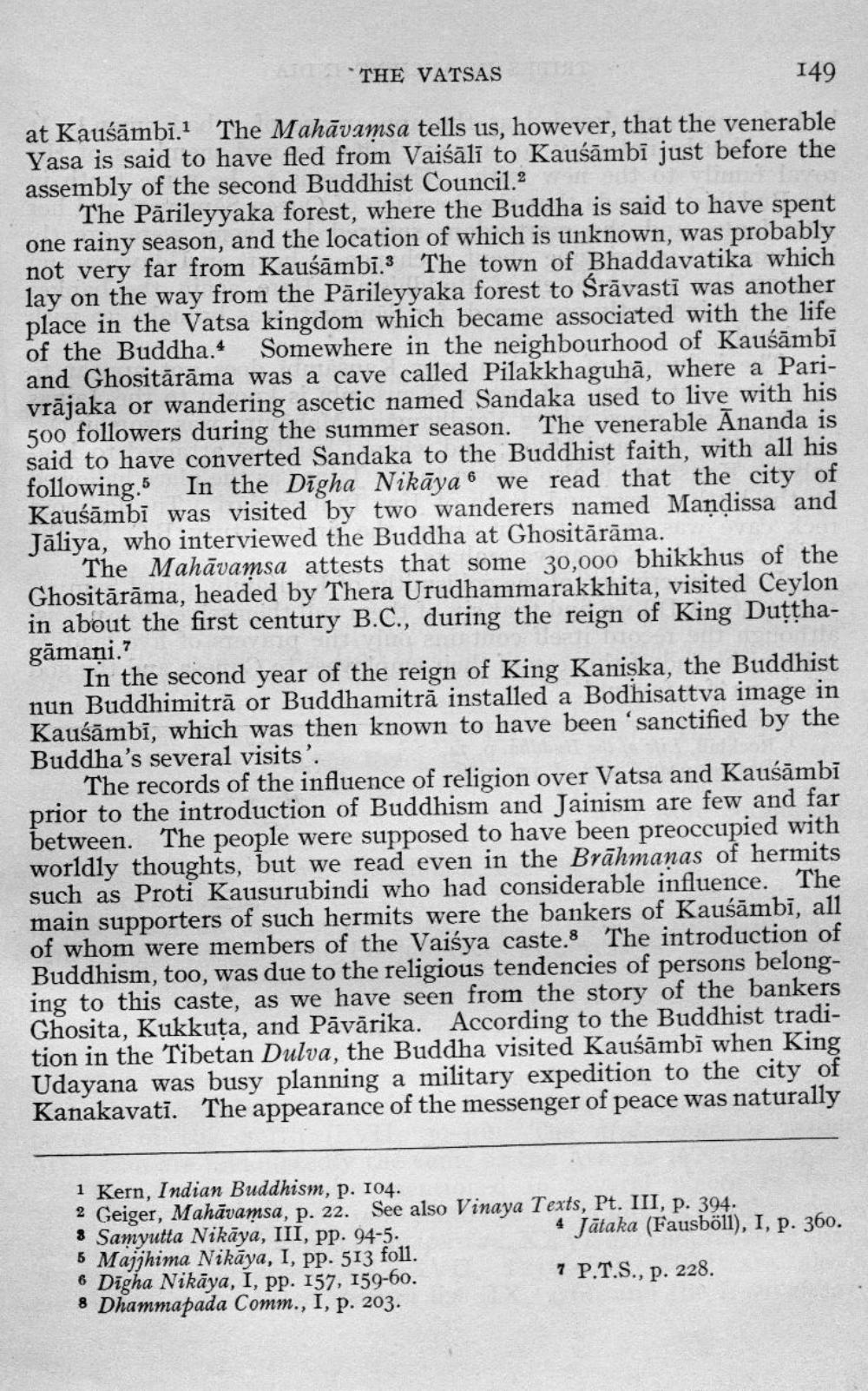________________
THE VATSAS
149
at Kaušāmbi. The Mahāvamsa tells us, however, that the venerable Yasa is said to have fled from Vaiśālī to Kausāmbī just before the assembly of the second Buddhist Council.2
The Pārileyyaka forest, where the Buddha is said to have spent one rainy season, and the location of which is unknown, was probably not very far from Kaušāmbi.3 The town of Bhaddavatika which lay on the way from the Pārileyyaka forest to Srāvasti was another place in the Vatsa kingdom which became associated with the life of the Buddha.4 Somewhere in the neighbourhood of Kausāmbi and Ghositārāma was a cave called Pilakkhaguhā, where a Parivrājaka or wandering ascetic named Sandaka used to live with his 500 followers during the summer season. The venerable Ananda is said to have converted Sandaka to the Buddhist faith, with all his following. In the Dīgha Nikāya 6 we read that the city of Kausāmbi was visited by two wanderers named Mandissa and Jāliya, who interviewed the Buddha at Ghositārāma.
The Mahāvamsa attests that some 30,000 bhikkhus of the Ghositārāma, headed by Thera Urudhammarakkhita, visited Ceylon in about the first century B.C., during the reign of King Dutthagāmani.?
In the second year of the reign of King Kaniska, the Buddhist nun Buddhimitrā or Buddhamitrā installed a Bodhisattva image in Kaušāmbi, which was then known to have been 'sanctified by the Buddha's several visits'.
The records of the influence of religion over Vatsa and Kausāmbi prior to the introduction of Buddhism and Jainism are few and far between. The people were supposed to have been preoccupied with worldly thoughts, but we read even in the Brāhmanas of hermits such as Proti Kausurubindi who had considerable influence. The main supporters of such hermits were the bankers of Kaušāmbī, all of whom were members of the Vaiśya caste.8 The introduction of Buddhism, too, was due to the religious tendencies of persons belonging to this caste, as we have seen from the story of the bankers Ghosita, Kukkuta, and Pāvārika. According to the Buddhist tradition in the Tibetan Dulva, the Buddha visited Kaušāmbi when King Udayana was busy planning a military expedition to the city of Kanakavatī. The appearance of the messenger of peace was naturally
1 Kern, Indian Buddhism, p. 104. 2 Geiger, Mahāvamsa, p. 22. See also Vinaya Texts, Pt. III, p. 394. 8 Samyutta Nikāya, III, pp. 94-5.
* Jặtaka (Fausböll), I, p. 36o. 5 Majjhima Nikāya, I, pp. 5I3 foll. 6 Digna Nikaya, I, pp. I57, I59-60.
7 P.T.S., p. 228. 8 Dhammapada Comm., I, p. 203.




